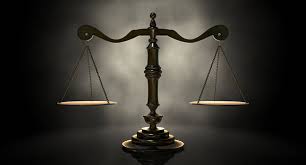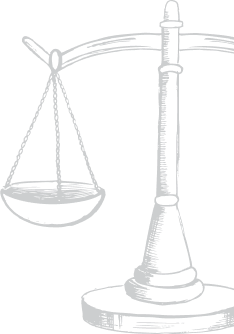By: Emily Carter, PhD Candidate in International Law, University of Geneva
Introduction
Climate change has emerged as one of the most pressing global challenges of the 21st century, reshaping not only ecosystems and economies but also the fundamental understanding of human rights and legal accountability. The crisis has shifted from being a matter of environmental science to a profound issue of justice, raising critical questions for international law: Who bears responsibility for the harms caused by climate change? What legal obligations do states and corporations have to mitigate environmental damage? How can vulnerable communities access remedies for climate-induced harms?
International law, once seen as insufficient in addressing the multidimensional crisis of climate change, is undergoing a remarkable transformation. Courts, treaty bodies, and arbitral tribunals are increasingly being called upon to recognize climate change as a human rights issue. This evolution marks a paradigm shift—placing the dignity, survival, and well-being of people at the center of climate governance.
Climate Change as a Human Rights Issue
Traditionally, climate change was framed as an environmental matter, governed largely by principles of state sovereignty, treaty obligations, and soft law under frameworks like the United Nations Framework Convention on Climate Change (UNFCCC) and the Paris Agreement. However, the inadequacy of these instruments to address the lived realities of vulnerable populations has fueled a growing recognition of climate change as a human rights issue.
Rising sea levels threaten the existence of low-lying island nations such as Kiribati and Tuvalu, endangering the right to self-determination. Heatwaves, floods, and droughts exacerbate food insecurity, undermining the right to health and adequate standards of living. Climate-induced displacement raises urgent questions about the rights of refugees and migrants.
International bodies have responded. In its 2018 report, the UN Human Rights Committee recognized that states may violate international law if they forcibly return individuals to countries where climate change poses life-threatening conditions. Similarly, the UN Human Rights Council has adopted resolutions recognizing the right to a clean, healthy, and sustainable environment. These developments underscore the interconnection between environmental degradation and fundamental human rights protections.
State Responsibility Under International Law
A central issue in climate change accountability is the extent to which states are legally responsible for greenhouse gas emissions and their impacts. The principle of “common but differentiated responsibilities” (CBDR), enshrined in the UNFCCC, acknowledges that while all states must act, developed countries bear a greater obligation due to their historical emissions.
Yet, the principle remains contested in practice. Small island states, grouped under the Alliance of Small Island States (AOSIS), have consistently argued for stronger accountability mechanisms, highlighting that their very survival depends on curbing emissions by industrialized nations. Advisory proceedings before the International Court of Justice (ICJ) are now being pursued to clarify the obligations of states under international law in relation to climate change—a groundbreaking step in defining the contours of responsibility.
Another important development is the 2023 Advisory Opinion request to the International Tribunal for the Law of the Sea (ITLOS), where small island nations have asked whether greenhouse gas emissions can constitute marine pollution under the United Nations Convention on the Law of the Sea (UNCLOS). Such proceedings indicate a growing reliance on international adjudication to advance climate justice.
Corporate Accountability and Transnational Litigation
Beyond states, multinational corporations have become a focal point in climate-related litigation. Companies in the fossil fuel industry, long shielded by legal complexities and jurisdictional challenges, are now facing lawsuits for their contributions to global warming.
A landmark case is Milieudefensie v. Royal Dutch Shell (2021), in which a Dutch court held Shell responsible for reducing its global carbon emissions by 45% by 2030, aligning with the Paris Agreement targets. This ruling, though subject to appeal, set a precedent for holding corporations legally accountable for their role in climate change.
Moreover, litigation strategies are increasingly transnational. Claimants are bringing suits in jurisdictions outside the home state of corporations, seeking remedies in courts where environmental protections and judicial independence are stronger. These efforts, combined with growing shareholder activism and consumer movements, are reshaping corporate behavior and embedding climate responsibility within the legal framework of business conduct.
Emerging Doctrines in International Climate Law
International climate litigation has also given rise to innovative legal doctrines. Among them:
- The Precautionary Principle – urging states and corporations to take action even in the absence of full scientific certainty.
- The No-Harm Rule – a customary principle of international law prohibiting states from causing environmental damage to other states.
- Intergenerational Equity – the idea that present generations hold the environment in trust for future generations, increasingly invoked in lawsuits filed by youth activists.
- Climate Refugee Rights – still underdeveloped but gaining traction, with calls for new legal instruments to protect those displaced by climate-induced disasters.
These doctrines reflect a legal system in evolution, expanding beyond traditional state-centric frameworks to embrace broader concepts of justice and accountability.
Challenges and Limitations
Despite these advancements, significant challenges remain. Enforcement of international law in climate matters is often weak, hampered by sovereignty concerns and political resistance. The reliance on voluntary commitments under the Paris Agreement illustrates the difficulty of binding states to strict legal obligations.
Furthermore, climate litigation faces procedural hurdles, such as questions of standing, causation, and jurisdiction. Courts often struggle to link specific harms to particular defendants, given the diffuse and global nature of greenhouse gas emissions. These obstacles highlight the need for innovative approaches to evidence, jurisdictional cooperation, and collective redress mechanisms.
The Role of International Institutions
International institutions play a crucial role in bridging these gaps. The UN Human Rights Council’s recognition of the right to a healthy environment is an important step toward embedding climate protections within international law. Regional courts, such as the Inter-American Court of Human Rights, have also expanded their jurisprudence to address environmental harms.
Arbitration and mediation are increasingly being explored as tools for climate-related disputes. International commercial arbitration, traditionally used for investment disputes, is now being adapted to resolve conflicts involving environmental and climate obligations. Pacta Lexis and similar institutions are at the forefront of advancing this innovative approach, training lawyers and arbitrators to navigate the intersection of climate change, human rights, and dispute resolution.
Toward a Future of Climate Justice
The recognition of climate change as both a legal and moral challenge marks a transformative moment in international law. The evolution of doctrines, litigation strategies, and institutional practices suggests a trajectory where climate justice becomes a central pillar of global governance.
For students, practitioners, and policymakers alike, the task ahead is not only to refine legal tools but also to ensure that they deliver meaningful outcomes for the most vulnerable. Access to justice, corporate accountability, and the integration of human rights into climate frameworks must guide this process.
International law cannot solve the climate crisis alone, but it provides a framework through which collective action, accountability, and justice can be pursued. The question is no longer whether climate change engages legal responsibility—it is how the international legal system can rise to meet the challenge.
Conclusion
Climate change is no longer a distant environmental concern but an urgent matter of rights, justice, and survival. The growing body of jurisprudence and the mobilization of international institutions reflect a legal order in transition—one that increasingly places people, rather than abstract state interests, at the center of climate governance.
The expansion of international law to confront climate change represents both an opportunity and a challenge. The opportunity lies in forging a legal system capable of addressing the defining crisis of our era. The challenge lies in ensuring that this system is inclusive, effective, and responsive to the needs of the most vulnerable.
Ultimately, climate change compels us to rethink the boundaries of international law, pushing it toward a more integrated and justice-oriented framework. The future of human rights and the future of the planet are, quite literally, intertwined.
About the Author
Emily Carter is a PhD Candidate in International Law at the University of Geneva, specializing in human rights and environmental law. She has published widely on the intersection of climate change and international justice and is actively engaged in research on transnational climate litigation. Her work has been featured by international legal platforms, including Pacta Lexis.














